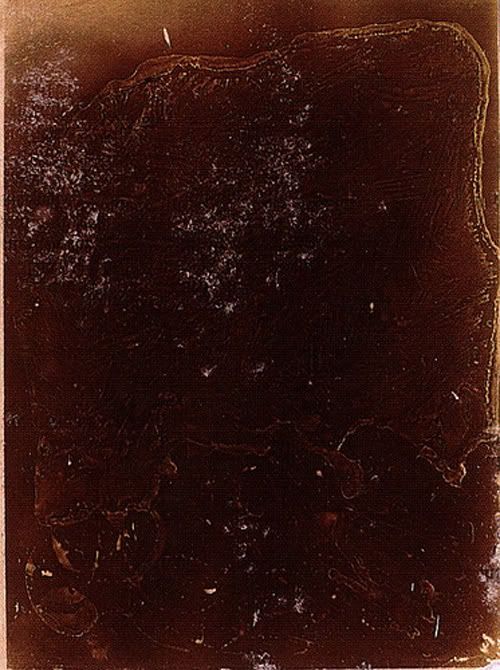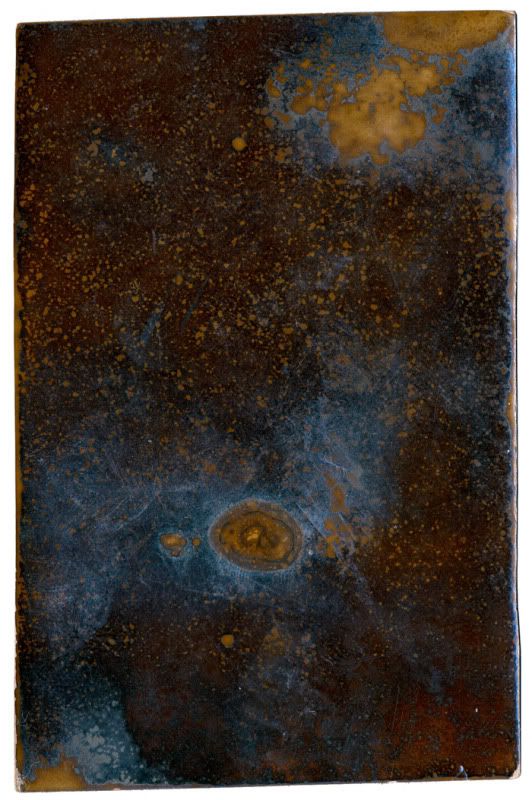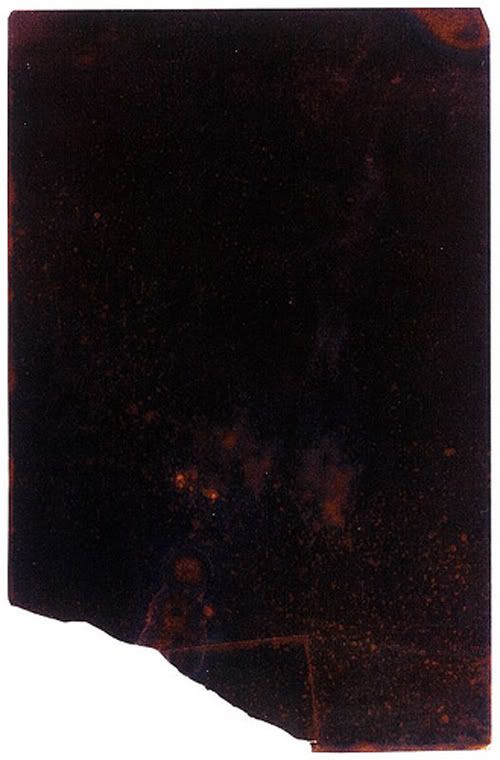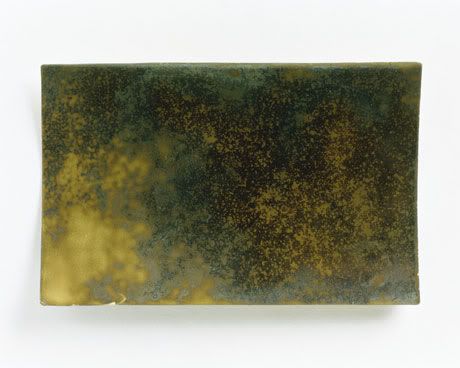“When I first started exhibiting these photographs, the reaction was not very … welcoming. Very few people liked them. But it’s funny if I think about it now. People would say, “What do you mean it’s a photograph of a photograph? What are you talking about?” What gave them a problem, I think, was that they couldn’t understand what the actual object was. It wasn’t like a collage. The literalness of the actual, physical object was disorienting. And the thing was, it looked like a photograph because it was a photograph.”
What a smart guy.
Monday, March 8, 2010
Monday, March 1, 2010
August Stringberg's Celestographs
From Cabinet Magazine. The phrase "chamical naturalism" really struck a chord with me.
The experiments involved quite simply placing his photographic plates on a window sill or perhaps directly on the ground (sometimes, he tells us, already lying in the developing bath) and letting them be exposed to the starry sky.
This sounds like very traditional idealistic symbolism. But what is remarkable, and what makes these images so "modern," is that they also concrete examples of a kind of chemical naturalism (as in the work of Polke, Kiefer, and many other recent artists). Strindberg insisted that art should try to "imitate […] nature's way of creating," and in these celestographs the image and the world have approached each other to the extent that they more or less merge. Whatever the coincidences were that created these pictures, the subject matter appears less as a photographic image than as a "work" by nature itself.




The experiments involved quite simply placing his photographic plates on a window sill or perhaps directly on the ground (sometimes, he tells us, already lying in the developing bath) and letting them be exposed to the starry sky.
This sounds like very traditional idealistic symbolism. But what is remarkable, and what makes these images so "modern," is that they also concrete examples of a kind of chemical naturalism (as in the work of Polke, Kiefer, and many other recent artists). Strindberg insisted that art should try to "imitate […] nature's way of creating," and in these celestographs the image and the world have approached each other to the extent that they more or less merge. Whatever the coincidences were that created these pictures, the subject matter appears less as a photographic image than as a "work" by nature itself.




Subscribe to:
Comments (Atom)
Followers
About Me
other places
- Art Fag City
- Beck
- BLDG BLOG
- Book By It's Cover
- But Does It Float
- David Byrne
- E-Flux
- Eyeteeth
- Finders Keepers Records
- Hello Kitty Hell
- Horses Think
- KEXP
- Mc Sweeney's
- Normal's Books and Music
- Orisinal
- Sublime Frequencies
- Synaptic Stimuli
- Tangle of Thorns
- Tavi
- Text of Light Group
- The Slog
- True Vine Record Shop
- Ubu
- VVORK
- Woolgathersome
- You Thought We Would'nt Notice
